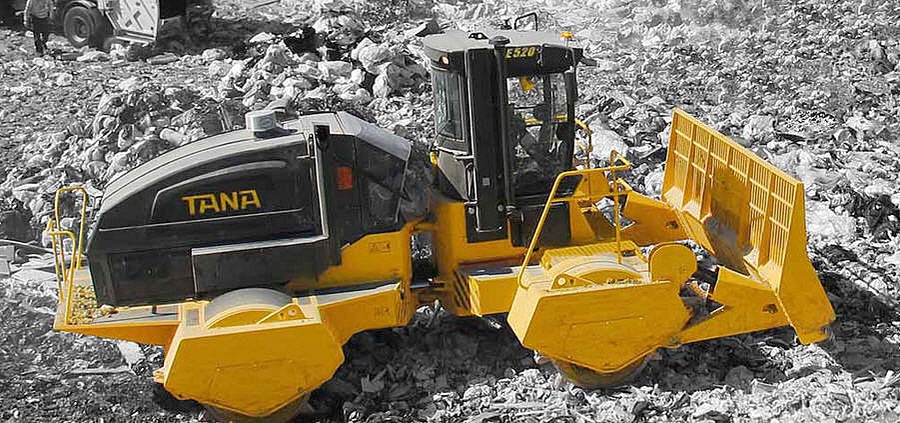
#Product Trends
Increase the productive lifecycle of the landfill by being 10% more efficient in compacting the waste
Maximizing compaction rate and prolonging the lifetime of a landfill with optimal operating costs are the main objectives of today''s waste management professionals. Tana will increase the compaction rate with the minimum of 10 % in comparison to other manufacturers. How is that being done?
How can Tana achieve 10% higher compaction rate than anyone else?
The most simple way to calculate the landfill compaction density is to measure the landfill area, airspace used and tons applied to this area. Typically it is between 700 kg /m3 and 1300 kg /m3. This density is affected by the waste type and its varying characteristics as well as equipment used for compacting. TANA E-series landfill compactor reaches a minimum of 10% higher compaction rate than any four-wheeled machine in any country.
Let us look through an example what this means in money. The example is based on reality of an Australian customer some years back. The diagram below illustrates the compaction rates on a Australian landfill where the customer went from a four wheeler to Tana. After having used Tana for a year they made a comparative calculation of the compaction rate. Results: Tana 1,25 tons/m3, four-wheeler 0,9 tons/m3.
Maximizing compaction rate and prolonging the lifetime of a landfill with optimal operating costs are the main objectives of today''s waste management professionals. Tana will increase the compaction rate with the minimum of 10 % in comparison to other manufacturers. How is that being done?
How can Tana achieve 10% higher compaction rate than anyone else?
The most simple way to calculate the landfill compaction density is to measure the landfill area, airspace used and tons applied to this area. Typically it is between 700 kg /m3 and 1300 kg /m3. This density is affected by the waste type and its varying characteristics as well as equipment used for compacting. TANA E-series landfill compactor reaches a minimum of 10% higher compaction rate than any four-wheeled machine in any country.
Let us look through an example what this means in money. The example is based on reality of an Australian customer some years back. The diagram below illustrates the compaction rates on a Australian landfill where the customer went from a four wheeler to Tana. After having used Tana for a year they made a comparative calculation of the compaction rate. Results: Tana 1,25 tons/m3, four-wheeler 0,9 tons/m3.
With the total amount of their incoming waste the yearly consumption of air space was 389 000 m3 with a four wheeler whereas Tana consumed only 280 000 m3. This results in a total saving of 109 000 m3 of airspace.
At the time the cost per cubic meter of air space on that landfill was 42 AUD. The total cost of used airspace each year were 16,3 million AUD as opposed to 11,8 million AUD.
otal savings resulting from a better compaction rate in this case were 4 500 000 AUD!
Tana compaction methodology explains in further detail how this is being done. Read more here.

